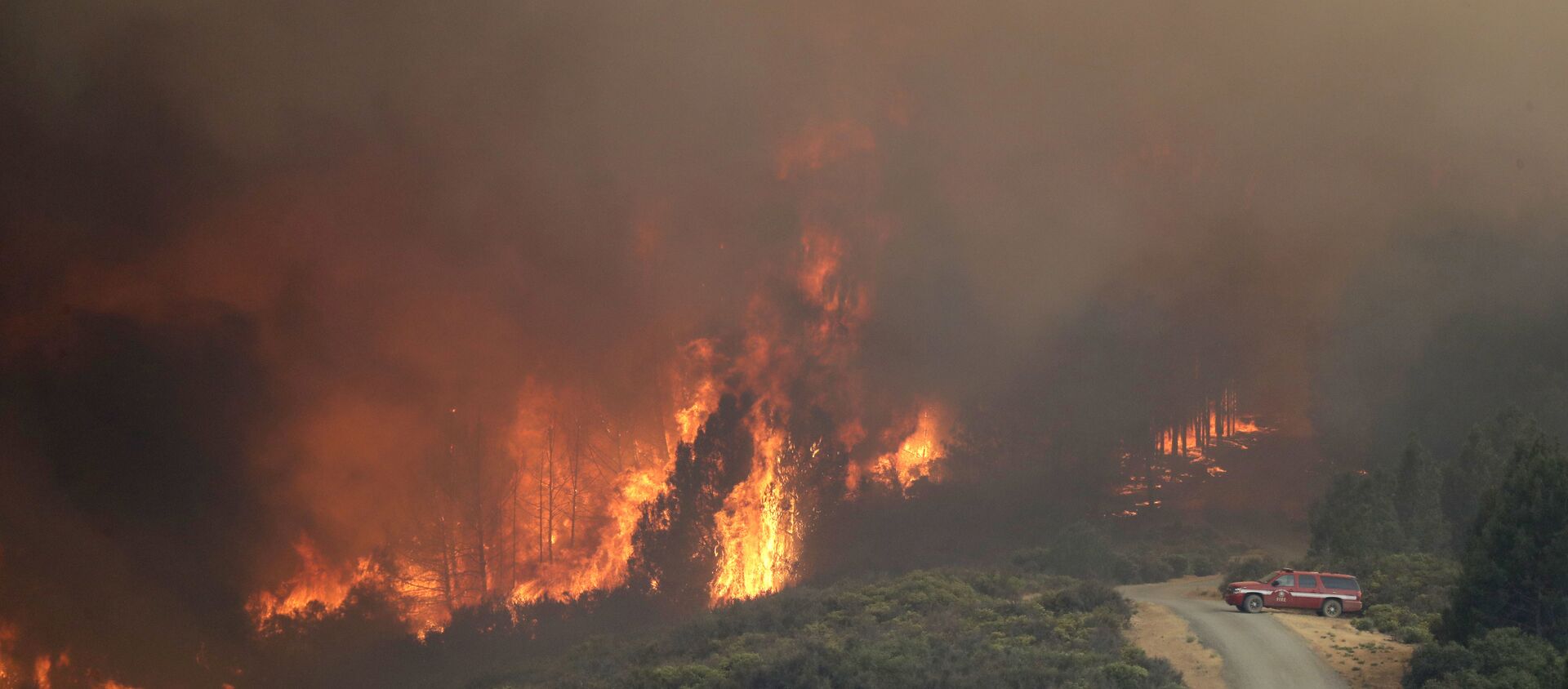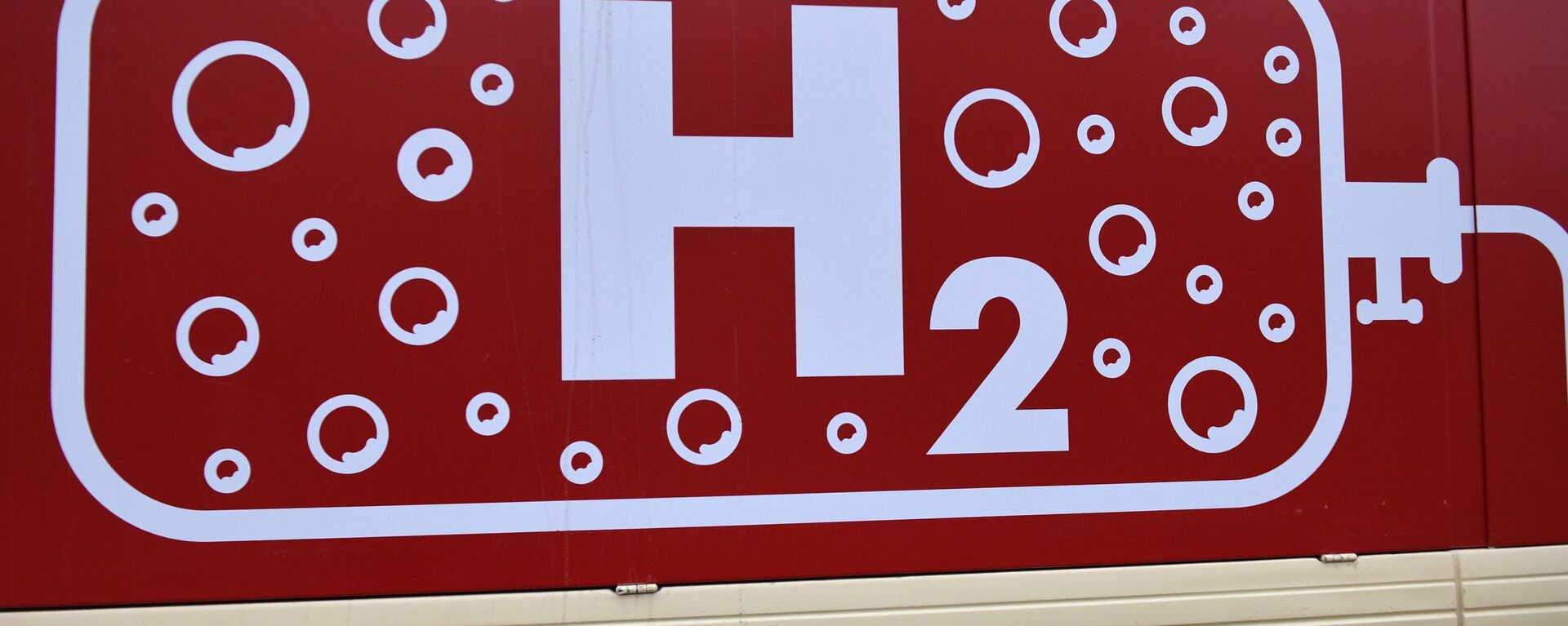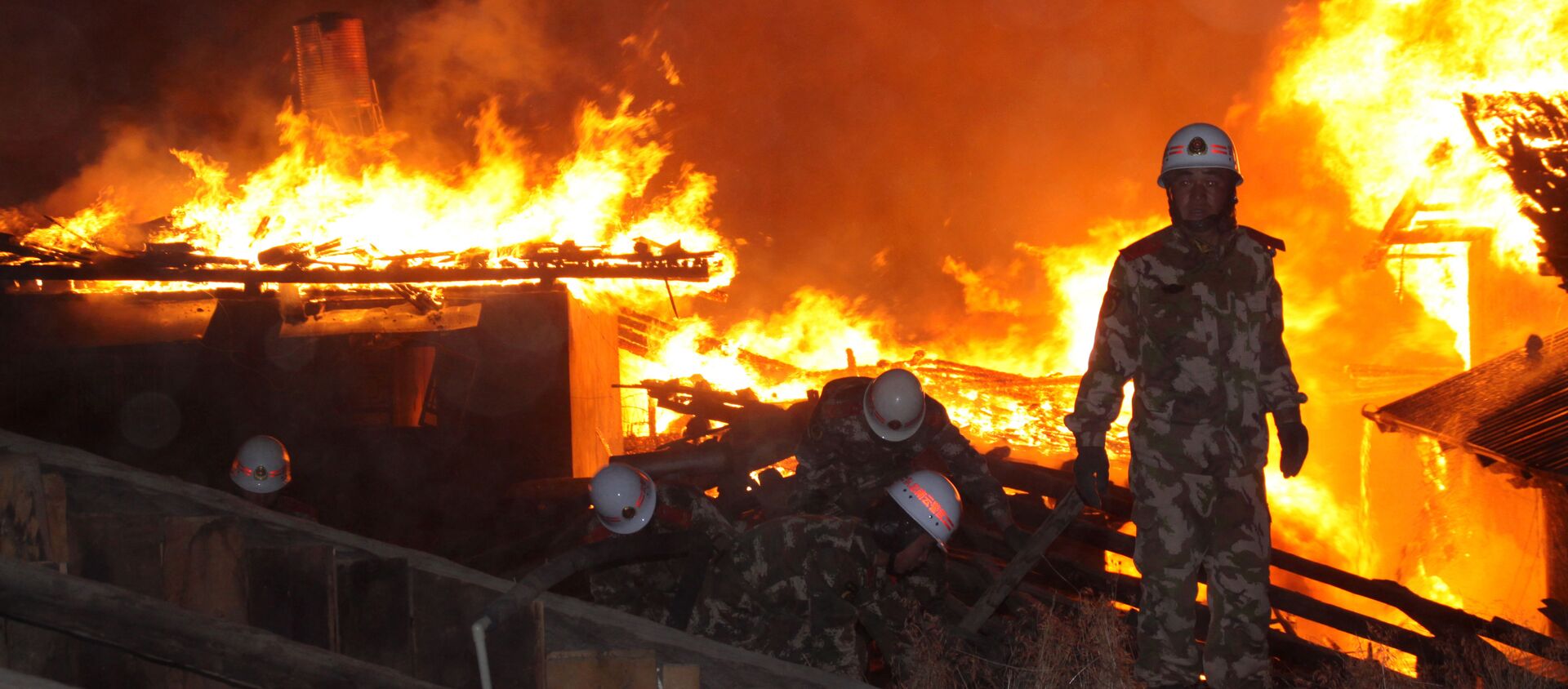https://sputnikglobe.com/20230511/scientists-find-way-to-prevent-fires-in-coal-mines-using-3d-models-1110036562.html
Scientists Find Way to Prevent Fires in Coal Mines Using 3D Models
Scientists Find Way to Prevent Fires in Coal Mines Using 3D Models
Sputnik International
Scientists from Tomsk Polytechnic University in collaboration with peers developed a methodology for creating 3D models of airflow in coal mines that will allow to predict the fire by monitoring the concentration of inflammable gases.
2023-05-11T03:00+0000
2023-05-11T03:00+0000
2023-05-11T03:00+0000
beyond politics
science & tech
tomsk polytechnic university
3d
coal mine
fire
https://cdn1.img.sputnikglobe.com/img/07e5/0b/19/1091009944_0:100:1238:796_1920x0_80_0_0_d749a6203cdf61f0c822fc759c7cd037.jpg
The results of their research were published in Fire peer-reviewed journal.The extraction of coal seams in underground mines is accompanied by the release of methane, a combustible gas that is explosive when mixed with air. TPU scientists emphasized that most accidents in coal mines are associated with fires. They pose danger to the lives and health of miners and also cause significant damage to infrastructure. Experts noted that the cost of dealing with the consequences of fires is up to 95% of the cost of eliminating all accidents that occur in mining facilities.To ensure fire safety, the concentration of methane in mines is constantly monitored. According to the scientists, a complex ventilation system, which supplies large volumes of air into the mine, is used for this purpose.Designing a ventilation system requires taking into account many factors and ensuring, with certainty in the calculation, that an adequate volume of airflow reaches every point in the mine network. Currently, ventilation network design is carried out using 2D modeling, the experts noted.TPU scientists in collaboration with colleagues from various cities in Russia proposed methods for creating 3D models that will allow more precise calculation of air supply to mines and more effective monitoring of the concentration of combustible gases."The main idea of our development is as follows: we consider the frontal projection of the volumetric model of individual sections of the ventilation network. By combining a large number of these projections, we obtain a detailed model to improve the quality of air management in coal mines," explained Nikita Martushev, an associate professor at the Tomsk Polytechnic University's Materials Science Department.Scientists have found that diagonal connections in the ventilation system increase the risks of methane accumulation and explosion, and make it difficult for air to flow into hard-to-reach underground areas.The developers have proposed a new scheme for building the ventilation network. In this scheme, a three-dimensional spatial model of the ventilation system is constructed. Working with such a model is quite complex. Therefore, for calculations, projections of this model in 2D are used.This approach allows for a better understanding of the scientific processes involved in managing air flows in mines during the extraction of minerals (coal). It also provides a more accurate way to select the operating mode of the main ventilation fan and to control the air circulation in the mine."As an object for creating a pilot three-dimensional model, we used the Sadkinskoye coal deposit in the Rostov region. We took into account all the parameters of the mine: the lengths of the sections, the sizes of the corridors, and the locations of the control nodes. In addition, we were able to conduct a comprehensive analysis and evaluation of aerial gas processes in the mine's ventilation network," added Martushev.According to the engineers, the model they have developed will help in designing efficient underground mine ventilation systems. Another important application of this model is the calculation of the position of sensors to detect methane concentrations. Understanding the patterns of air movement in the mine allows for the selection of locations where methane concentration may be the highest. Installing sensors in these locations will allow for forehanded warning of the danger of high methane concentration to mine personnel and taking prompt measures to prevent the danger of methane ignition in the mine.Tomsk Polytechnic University is a participant in the Russian Federation's "Priority 2030" program for supporting universities.
https://sputnikglobe.com/20220602/scientists-created-cheap--effective-material-for-hydrogen-economy-1095918134.html
https://sputnikglobe.com/20210601/russian-scientists-find-mathematical-method-to-put-out-fires-1083047712.html
https://sputnikglobe.com/20201211/scientists-identify-forest-fire-conditions-1081430625.html
https://sputnikglobe.com/20190927/russian-scientists-significantly-improve-quality-of-tomography-1076905098.html
Sputnik International
feedback@sputniknews.com
+74956456601
MIA „Rossiya Segodnya“
2023
Sputnik International
feedback@sputniknews.com
+74956456601
MIA „Rossiya Segodnya“
News
en_EN
Sputnik International
feedback@sputniknews.com
+74956456601
MIA „Rossiya Segodnya“
Sputnik International
feedback@sputniknews.com
+74956456601
MIA „Rossiya Segodnya“
russia, russian science, tomsk polytechnic university, 3d modelling, fire
russia, russian science, tomsk polytechnic university, 3d modelling, fire
Scientists Find Way to Prevent Fires in Coal Mines Using 3D Models
Scientists at Tomsk Polytechnic University (TPU), in collaboration with colleagues, have developed a methodology for creating 3D models of airflow in coal mines. According to experts, this will allow to control airflows, to monitor the concentration of inflammable gases, and thereby reduce the chance of fires.
The extraction of coal seams in underground mines is accompanied by the release of methane, a combustible gas that is explosive when mixed with air. TPU scientists emphasized that most
accidents in coal mines are associated with fires. They pose danger to the lives and health of miners and also cause significant damage to infrastructure. Experts noted that the cost of dealing with the consequences of fires is up to 95% of the cost of eliminating all accidents that occur in mining facilities.
To ensure fire safety, the concentration of methane in mines is constantly monitored. According to the scientists, a complex ventilation system, which supplies large volumes of air into the mine, is used for this purpose.
Designing a ventilation system requires taking into account many factors and ensuring, with certainty in the calculation, that an adequate volume of airflow reaches every point in the mine network. Currently, ventilation network design is carried out using 2D modeling, the experts noted.
TPU scientists in collaboration with colleagues from various cities in Russia proposed methods for creating 3D models that will allow more precise calculation of air supply to mines and more effective monitoring of the concentration of combustible gases.
"The main idea of our development is as follows: we consider the frontal projection of the volumetric model of individual sections of the ventilation network. By combining a large number of these projections, we obtain a detailed model to improve the quality of air management in coal mines," explained Nikita Martushev, an associate professor at the Tomsk Polytechnic University's Materials Science Department.
Scientists have found that diagonal connections in the ventilation system increase the risks of
methane accumulation and explosion, and make it difficult for air to flow into hard-to-reach underground areas.

11 December 2020, 14:16 GMT
The developers have proposed a new scheme for building the ventilation network. In this scheme, a three-dimensional spatial model of the ventilation system is constructed. Working with such a model is quite complex. Therefore, for calculations, projections of this model in 2D are used.
This approach allows for a better understanding of the scientific processes involved in managing air flows in mines during the extraction of minerals (coal). It also provides a more accurate way to select the operating mode of the main ventilation fan and to control the air circulation in the mine.
"As an object for creating a pilot three-dimensional model, we used the Sadkinskoye coal deposit in the Rostov region. We took into account all the parameters of the mine: the lengths of the sections, the sizes of the corridors, and the locations of the control nodes. In addition, we were able to conduct a comprehensive analysis and evaluation of aerial gas processes in the mine's ventilation network," added Martushev.

27 September 2019, 11:48 GMT
According to the engineers, the model they have developed will help in designing efficient underground mine ventilation systems. Another important application of this model is the calculation of the position of sensors to detect methane concentrations. Understanding the patterns of air movement in the mine allows for the selection of locations where methane concentration may be the highest. Installing sensors in these locations will allow for forehanded warning of the danger of high methane concentration to mine personnel and taking prompt measures to prevent the danger of methane ignition in the mine.
Tomsk Polytechnic University is a participant in the Russian Federation's "Priority 2030" program for supporting universities.






